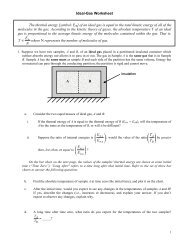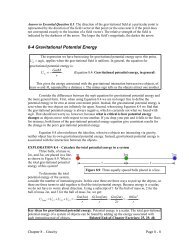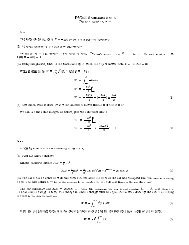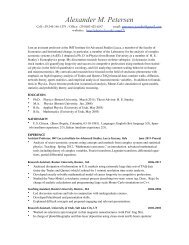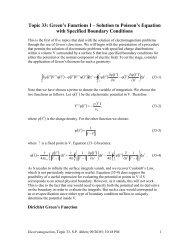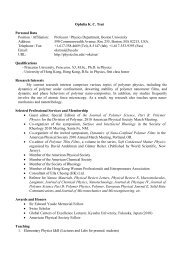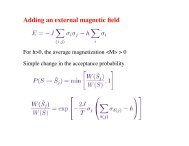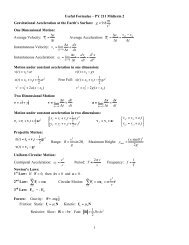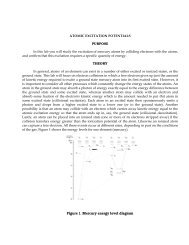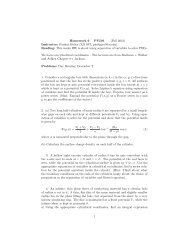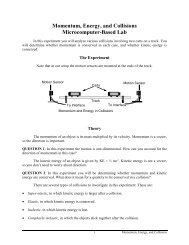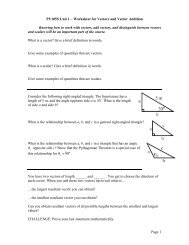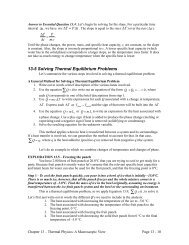Crystal Structure 1 3.1 Some Basic Concepts of Crystal Structure ...
Crystal Structure 1 3.1 Some Basic Concepts of Crystal Structure ...
Crystal Structure 1 3.1 Some Basic Concepts of Crystal Structure ...
Create successful ePaper yourself
Turn your PDF publications into a flip-book with our unique Google optimized e-Paper software.
<strong>Crystal</strong> <strong>Structure</strong><br />
Fig. 3.28 Explanation <strong>of</strong> the absence <strong>of</strong> a (100) reflection from a bcc lattice. The phase difference between<br />
successive planes is , so that the reflected amplitude from two adjacent planes is 0.<br />
(2) <strong>Structure</strong> factor <strong>of</strong> fcc lattice<br />
The basis referred to the cubic cell has identical atoms at 000; 0½½; ½0½; ½½0.<br />
Hence,<br />
S G (m, n, p) = f{1 + exp[i( n + p)] + exp[i(m + p)] + exp[i(m + n)]} (3.31)<br />
There are 4 cases:<br />
1. All m, n, p are even. Then S G (m, n, p) = 4.<br />
2. All m, n, p are odd. We have the same result as in 1.<br />
3. Two <strong>of</strong> the m, n, p are even. Then one <strong>of</strong> the exponentials is +1 and two <strong>of</strong> the<br />
exponentials are –1. Hence S G (m, n, p) = 0.<br />
4. Two <strong>of</strong> the m, n, p are odd. We have the same result as in 3.<br />
Hence, in fcc, no reflection can occur for those with indices that are partly even, or partly<br />
odd. (see Fig. 3.29 for the comparison between the scattering spectrum <strong>of</strong> KCl and that <strong>of</strong><br />
KBr.)<br />
Effect <strong>of</strong> form factor on the diffraction spectrum<br />
<br />
From eqn. 3.27, atomic form factor, f<br />
j<br />
dVn<br />
j<br />
( )exp( ik<br />
<br />
). This shows that it is<br />
essentially the Fourier transformation <strong>of</strong> the electron distribution about the atom at r j . We<br />
can think <strong>of</strong> how qualitatively f j should vary with the spatial extent <strong>of</strong> the electron<br />
distribution. In the limit where the charge is concentrated at one point, the Fourier<br />
transformation (hence f) will be flat in k-space. But if the charge distribution is smeared<br />
out, f will be decreasing from k = 0 with width <strong>of</strong> the order equal the reciprocal <strong>of</strong> the<br />
size <strong>of</strong> the charge distribution.<br />
25



![arXiv:1303.7274v2 [physics.soc-ph] 27 Aug 2013 - Boston University ...](https://img.yumpu.com/51679664/1/190x245/arxiv13037274v2-physicssoc-ph-27-aug-2013-boston-university-.jpg?quality=85)
